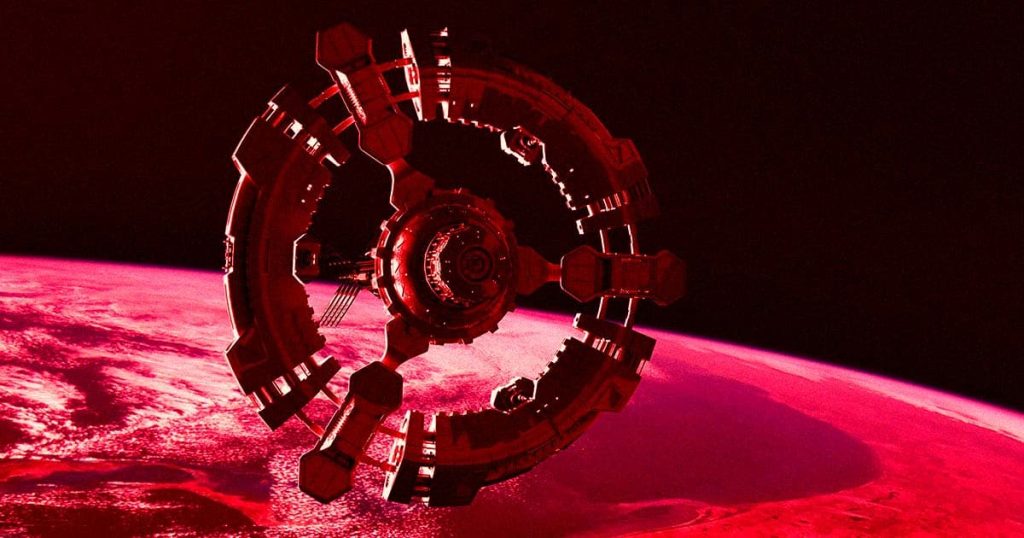
Researchers Plotting Giant Spaceship That Could Carry Generations of Humans (Image Credit: futurism-com)
An international consortium of scientists, engineers, and urban planners called Project Hyperion has launched a design competition for a massive multi-generational spaceship that could sustain and transport humans on long journey across the interstellar expanse.
As Universe Today reports, the competition is challenging the public to come up with a concept that relies on current and near-future technologies. The winning team gets a prize of $10,000.
Despite the exciting prospect of a spacecraft that could carry us to far-flung places in the universe, the competition isn’t much more than a fascinating thought experiment, ripped straight out of a sci-fi novel.
For one, relying on the currently available propulsion methods, getting to even the closest star system Proxima Centauri — which isn’t believed to be habitable, by the way — could take north of 1,000 years.
Even projecting ahead, futuristic propulsion concepts would only cut that commute down to anywhere from 36 to 85 years, according to Universe Today.
Generation ships would lean into that reality by allowing humanity to thrive and even have children while on their way to a distant location light-years away, making the competition a fun brain teaser about what such a ship might look like.
“An interstellar starship flies by an icy planet in a nearby solar system,” reads a design brief. “Going beyond the classical examination of the problem of interstellar propulsion and structural design, for a voyage lasting multiple centuries, what might be the ideal type of habitat architecture and society in order to ensure a successful trip?”
The generation ship needs to be “self-sustaining” to allow the “initial crew” to “live, reproduce, and die on the ship, with their descendants continuing the journey until reaching the destination.”
In other words, it needs to have all the kinds of life-support systems necessary to keep humans alive for multiple generations, such as agriculture or alternative ways to grow food.
Specifically, the ship’s mission should be “designed to span 250 years,” while providing “Earth-equivalent gravity through artificial means, such as rotation,” and “comprehensive radiation shielding” to protect anywhere from 500 to 1,5000 inhabitants.
“Think about the difference between a drone and an ocean liner,” Hyperion Project’s Organizing Committee member Andreas Hein told Universe Today. Generation ships “tend to be much larger than interstellar probes, though they would likely use similar propulsion systems, such as fusion-based propulsion.”
Instead of struggling with the constraints of current technologies, the design competition takes a step back, requiring each participating team to consist of at least one designer, engineer, and social scientist.
“This competition uniquely explores the complex interplay between generation ship technologies and the dynamics of a highly resource-constrained society,” Hein said.
The thought experiment could even inform how we fight off existential threats back on Earth, such as climate change.
“I believe that thinking beyond Earth can offer valuable insights into how we might improve life here on ‘spaceship Earth,'” Organizing Committee architect and designer Yazgi Demirbas told Universe Today. “Just as in space, where we face numerous challenges, our planet requires innovative approaches to foster harmony and resilience amidst current global conflicts and challenges.”
More on generation ships: On an Interstellar Flight, Language Itself Would Evolve
Share This Article





